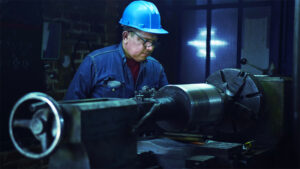With ExxonMobil’s acquisition of Pioneer, it’s time to kiss the days of mom-and-pop shale operations goodbye. But before we look at what’s next, let’s look at the shale journey over the last two decades.
Thanks to high oil prices in the early aughts, small shale operations could innovate and develop new techniques for extracting that black gold. Once the US was close to achieving energy independence, super majors caught a whiff of the money and started buying up those smaller producers.
This recent acquisition signals the end of an era as the super majors now dominate shale production. So what does that mean for US shale? While there will be less innovation and slower production growth, ExxonMobil will provide more stability to the industry.
But that’s only the beginning of this story…we’ll be breaking down the second shale revolution tomorrow.
Here at Zeihan On Geopolitics we select a single charity to sponsor. We have two criteria:
First, we look across the world and use our skill sets to identify where the needs are most acute. Second, we look for an institution with preexisting networks for both materials gathering and aid distribution. That way we know every cent of our donation is not simply going directly to where help is needed most, but our donations serve as a force multiplier for a system already in existence. Then we give what we can.
Today, our chosen charity is a group called Medshare, which provides emergency medical services to communities in need, with a very heavy emphasis on locations facing acute crises. Medshare operates right in the thick of it. Until future notice, every cent we earn from every book we sell in every format through every retailer is going to Medshare’s Ukraine fund.
And then there’s you.
Our newsletters and videologues are not only free, they will always be free. We also will never share your contact information with anyone. All we ask is that if you find one of our releases in any way useful, that you make a donation to Medshare. Over one third of Ukraine’s pre-war population has either been forced from their homes, kidnapped and shipped to Russia, or is trying to survive in occupied lands. This is our way to help who we can. Please, join us.
Transcript
Hey everybody. Peter Zeihan here coming to you from Colorado, where the big news from last week, which was a believe the 10th of October, was that ExxonMobil, the energy supermajor, has bought up a company called Pioneer with an all stock by about $60 billion of stock. Pioneer is the single largest producer in the shale fields in the Permian Basin, which is the most productive energy basin in the world now.
So I thought it would be great to kind of take a walk down memory lane and then take us forward into what’s going on with the energy sector in the United States and the wider world starting Michele. So short version is that there have been multiple phases to the shale breakout. It all started back in the early 2000s when the United States found itself facing kind of a double bind.
We had had a coup in Venezuela, which had taken one of the major suppliers of crude for the Western Hemisphere off. And the Iraq war had started. So a major source in the Eastern Hemisphere was offline. And energy prices hit near record levels in a very short period of time. And there’s nothing like high prices to trigger the sort of activity that’s necessary to bring new supplies to the market.
And a lot of technologies that had been part of the energy matrix for decades, in some cases over a century. They started to play with them in new ways. So the two issues in question were something called fracking, which is basically injecting water into a well with a suspension of sand in order to crack the rock. And then you pull the water back out and the sand stays behind and props open the cracks.
We’ve been doing some version of this for over a century, but that was now being combined with something called horizontal drilling, where instead of just going down and punching through a cap rock to get to a reservoir, you go down and then you go laterally across a rock strata. Shale is different from normal crude. Normally, the crude migrates through the rock formation until it hits some sort of non-porous rock that it can’t pass through.
And then it builds up into kind of a pool with a lot of pressure. So when you punch through the tap rock with a drill bit, you get pressure that pushes the oil out. And then eventually you can pump water down into that formation in order to loosen up more of the oil and get even more out. Shale is different because the rock itself was never porous, and so the little bits of energy are trapped almost at the moment of formation within the rock strata.
And so you’ve got to break them out. It’s neither of these technologies were really new, but combining them was. And as is normal, when new technologies come to the fore, it’s not the big players who do it. It was the small players. So this is not ExxonMobil or Chevron or ConocoPhillips or Total or any of the rest. These are mom and pop operations who only own a few acres of mineral rights, who would drill everything that they had.
Now, the economics of that are maybe questionable, but remember, we’re in an environment of much higher oil prices. So you had small operations that were desperate to find a way to crack the code on new technologies in order to stay in business. And since we had high prices from roughly 23 until 2008, they had a long period of high prices that they were able to operate in.
And for small companies, that meant a lot of innovation. And so we developed dozens of new techniques, kind of clustered into these two general categories. And that brought a lot of natural gas, which was easier to produce into the market. And by the time we get to 2008, we’re starting to do the same thing for oil. And of course, we had the financial crisis, so everyone got hammered.
But then we had Wall Street, who was looking for new investments. And since these small mom and pops had done so well for the last few years, there was a lot of money that came in from the stock market or bonds or joint ventures, whatever it happened to be. Now, by the time we get to 2013, 2014, these technologies had matured quite a bit, and the United States was very, very close to achieving technical energy independence.
And that meant that the super majors started to come to play. Now, starting back in the 1970s, when U.S. energy production really started declining and force the super majors knowing that there wasn’t anything left in the United States with how they understood energy production, they went abroad and well, things got ugly. Most of the countries that they started producing energy and whether it was in the Middle East or off the coast of Africa or South America, didn’t have very strong rule of law.
The local energy partners were tended to be pretty corrupt and it was a crapshoot, especially since a lot of these projects were in areas with limited infrastructure. It could take ten years of investment before you saw any return, and then it might just be nationalized. So they kind of had a crap sandwich for 30 years. Well, then they look back home and they see this flotilla of small companies just making bank.
And so they started coming back to the United States and buying of the shale plays and buying up the engineers. And sometimes even these smaller companies in total in order to learn what had been developed back home. They saw a lot of familiarity because, you know, these two technologies were not breakthroughs. And of them themselves, the the the technique of combining them, that’s where the interest was.
And so year after year after year, the companies came back in greater and greater force. The company that was first for that was ChevronTexaco, because it had a lot of legacy production from the Permian Basin in West Texas, which had been part of previous oil booms. But it also had 20 layers of shale. So they were able to use their preexisting mineral rights and buy up some of the talent that was available and apply it to what they already had.
Exxon didn’t have that option. Exxon just had to come in and bye bye, bye, bye bye. And in the meantime, Pioneer, which is a company that dates back to the T Boone’s Pickens days, if you guys know that name was a legitimate producer in its own right, but it too was just basically was hoovering up all of these small companies for a decade.
You fast forward today, ExxonMobil is like, okay, okay, okay. The crap sandwich that is the international energy industry that’s not nearly as hopeful as we thought it was going to be. So we need to do something a little bit bigger. And so they found the single largest player in the Permian Pioneer. And just and when when Exxon does a merger, whoever is after the Exxon part is still, you know, technically it’s ExxonMobil, but Mobil’s long gone.
So basically, there’s been absorbed into the Borg behemoth that is ExxonMobil. Which brings us to today. This is probably the end of the first shale revolution because the character of it all, these small companies doing massive innovation that is now pretty much gone. And the majority of the shale production in the United States now is owned by the super majors again.
So we’re back to where we were in the seventies. That doesn’t mean that production growth is going to stop. That doesn’t mean that innovation is going to stop. But things are definitely going to slow down now. Exxon has a lot more market control. It has a lot more market discipline. And when you’ve got a small company that only owns a few acres, they will drill every theoretical spot that they think they can get oil out of.
But when a huge company owns hundreds of thousands of acres of mineral rights, they’re going to drill the best spots. And when those are tapped, they will then do a little bit more targeted innovation on the next best spots and so on, which means we should expect production growth to be less frenetic than we’ve seen in the past.
It doesn’t mean it’s going to stop. But, you know, in the last 15 years, the U.S. shale sector has set records for added production, I think, in nine of those years. Those days are probably behind us, will probably never add more than a million barrels a day a year again. But, you know, records exist to be broken. We’ll see now from the point of view of a normal person at the end of the first show, revolution isn’t going to seem very much different, but from within the industry, it’s going to be pretty significant.
Kind of the defining characteristic of ExxonMobil is it has all the stuff that it needs in-house. So it can’t just use these technologies or carry them forward. It can do so at scale and kind of turn it to an assembly line process. It’s much more reliable and gets more output for less input. Perhaps just as importantly, the defining characteristic of small companies is they don’t have a lot of cash, so they take it from wherever they can get.
Most of these aren’t publicly traded. So you’re talking about loans or bonds or joint production ventures or whatnot, whereas Exxon can fund whatever it wants. So in the old days now, 5 to 15 years ago, small companies were dependent upon getting capital either from regional governments or banks or Wall Street. Well, that pretty much ceases to be a concern with Exxon.
And they can do the investment day in, day out, based on their own short, mid and long term economic forecasts. And this should generate a lot more smoothness in terms of production output. But it also means that a lot of the financial ups and downs that we have seen in the energy sector that were related to things that had nothing to do with the energy sector, those are probably behind us, and it should make all of this a lot more reliable in the time to go.
And it’s time now to start talking about the second shale revolution, and we’ll hit that tomorrow.








